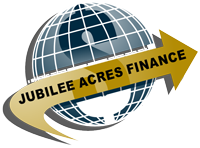Bridge Loans vs Traditional Mortgages: What’s the Difference?

How to Start Forex Trading in SEA with Just $100
June 18, 2025
How IPTV Is Making TV Affordable Again in Croatia
June 27, 2025Bridge Loans vs Traditional Mortgages: What’s the Difference?
Securing property finance in the UK often means choosing between a traditional mortgage and a bridge loan. While both serve the purpose of acquiring property, the structure, approval speed, repayment terms, and risks involved can differ dramatically. Understanding these differences is essential for making the right decision—especially when time or flexibility is a factor.
What Is a Bridge Loan?
A bridge loan is a short-term loan typically used to “bridge” a financial gap—such as buying a new property before selling an existing one. It is secured against a property or asset and usually repaid within 6 to 12 months, often through the sale of property or refinancing.
These loans are known for quick approvals, fast disbursement of funds, and flexible terms. However, they come with higher interest rates and fees compared to traditional mortgages.
What Is a Traditional Mortgage?
A traditional mortgage is a long-term loan, often spread across 15 to 30 years. It’s used to purchase residential or commercial property, with repayments made monthly. Approval for a mortgage is heavily based on the borrower’s credit history, income, affordability assessment, and property valuation.
Mortgages tend to offer lower interest rates due to the longer term and lower relative risk to lenders.
When Would You Use a Bridge Loan?
Bridge loans are particularly useful in time-sensitive property situations. These include:
-
Broken property chains: Buying a new property before your existing one sells.
-
Auction purchases: Securing property within 28 days of a winning bid.
-
Renovation projects: Refurbishing before flipping or refinancing.
-
Downsizing or upsizing: Moving quickly while waiting for sale proceeds.
These loans allow for speed, especially when traditional lending timeframes don’t match the urgency of the situation.
When Is a Traditional Mortgage a Better Fit?
A traditional mortgage is ideal when you are:
-
Purchasing a long-term residence or investment
-
Have time to wait for underwriting, valuation, and approval
-
Want predictable, manageable monthly repayments
-
Seeking the lowest possible interest rate
Mortgages also offer a higher degree of consumer protection due to regulatory oversight from the Financial Conduct Authority.
Pros and Cons Comparison
Bridge Loans
Advantages:
-
Quick approval and access to funds
-
Flexibility with repayments
-
Useful for temporary financial gaps
Limitations:
-
High interest and fees
-
Must have a solid exit plan
-
Risk of losing secured property if repayment fails
Traditional Mortgages
Advantages:
-
Lower interest over time
-
Structured, predictable payments
-
More favorable for long-term ownership
Limitations:
-
Slower application process
-
Stringent credit and income checks
-
Less suitable for short-term or urgent needs
Which Is Easier to Qualify For?
Bridge loans tend to have more lenient qualification standards when it comes to credit scores or income, since lenders focus more on the value of the secured asset and your exit strategy.
Mortgages, however, require:
-
Stable income
-
Proof of affordability
-
Strong credit history
-
Lower debt-to-income ratios
If you lack time or don’t meet the strict criteria of mortgage lenders, a bridge loan may be your only immediate solution.
Questions to Ask Before Deciding
Before choosing between a bridge loan and a mortgage, ask yourself:
-
How quickly do I need the funds?
-
Can I meet the repayment deadline for a bridge loan?
-
Do I qualify for a traditional mortgage?
-
Is my property or asset sufficient to secure a loan?
-
What is my long-term financial plan?
Answering these questions can help you align your decision with your financial goals and risk tolerance.
Final Thoughts
The choice between a bridge loan and a traditional mortgage depends largely on your situation, timing, and financial goals. If you need quick funding to secure a property or cover a short-term gap, a bridge loan may offer the speed and flexibility you need. For long-term property ownership, a traditional mortgage remains the more economical and stable choice.
To learn more or speak with a specialist about whether a bridge loan suits your needs, visit Bridge Loan, a trusted bridge loan broker offering tailored advice and competitive lending solutions.
